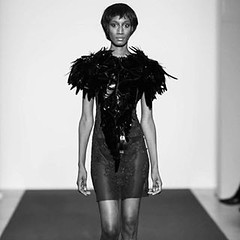
In the dazzling world of design, fashion designers are more than mere creators of clothing; they are the architects of our collective wardrobes, shaping cultural narratives and transforming everyday attire into profound statements of identity and self-expression. Their creations transcend the ordinary, becoming symbols of aspiration, elegance, and sometimes, rebellion. From the meticulous detail of a sketch to the dazzling spectacle of a runway show, these visionaries elevate fabric and thread into powerful storytelling. Their success stories, born from daring ideas and an unwavering commitment to turning dreams into wearable art, continue to influence generations, proving that fashion is a vibrant blend of art, commerce, and cultural commentary.
Throughout history, count less great designers have emerged, transforming outfits into pieces of art and fundamentally changing how different cultures embrace style globally. The legacy of these individuals often goes beyond seasons and years, enduring long after the designers themselves have left the stage. We are often left to wonder about the lost potential, the ‘what could have been,’ when truly iconic figures depart too soon, leaving behind stellar fashion empires and an unfulfilled promise of further creative brilliance.
This in-depth exploration journeys through the lives and works of some of the most iconic fashion designers, blending timeless legends with modern trailblazers. We will uncover the breakthroughs that launched their careers, the creative fuel that kept them relevant, and the lasting impact they have had on the global fashion landscape. Each story is a testament to determination, innovation, and the courage to challenge norms, cementing their place as true pioneers of style.

1. **Gianni Versace: The Opulent Empire and a Tragic End**Gianni Versace, the Italian fashion icon, founded the global luxury label that bears his name, building an empire that encompasses not just clothing but also accessories, fragrances, beauty products, and home furnishings. Launched with the opening of its first boutique in Milan in 1978, the brand rapidly ascended to become a name to reckon with in global fashion, synonymous with a distinct blend of opulent glamour and audacious appeal. His designs were characterized by their bold aesthetics, vivid colors, and iconic Medusa logo, captivating a loyal following worldwide.
Versace, however, left the world far too soon when his brilliant career was tragically cut short. He was brutally murdered in 1997 at the age of 50, outside his Miami Beach mansion, by serial killer Andrew Cunanan. At the time of his death, Versace’s burgeoning empire was valued at an astounding $807 million and boasted 130 boutiques spread across the world, a testament to his incredible vision and business acumen. His sudden passing sent shockwaves through the fashion industry, leaving a void that felt insurmountable.
Following Gianni’s death, his sister Donatella Versace, who had always been deeply involved in the business alongside her brother, courageously took the reins of the company. She inherited a significant portion of the Versace brand and stepped into the pivotal role of creative director, a position she continues to hold today as the artistic director and vice president of the Versace group. Under her leadership, the brand has not only honored Gianni’s flamboyant legacy but also evolved, reaching new heights of celebrity status and maintaining its position at the forefront of luxury fashion. In 2018, a model graced the Gianni Versace Retrospective runway show opening event in Berlin, commemorating the 40th anniversary of the brand’s founding, a powerful reminder of his enduring impact.

2. **Alexander McQueen: The Dark Poet of Avant-Garde Design**Alexander McQueen is widely regarded as one of the most talented and influential designers the world has ever seen, despite his stint in the fashion industry being relatively short. The British designer founded his eponymous label in 1992, quickly establishing a reputation for his provocative, emotionally charged, and visually stunning collections. His work pushed the boundaries of traditional fashion, blending masterful tailoring with visceral, theatrical presentations that were both hauntingly beautiful and unapologetically bold, captivating audiences with their raw emotion and profound artistic statements.
Beyond his own label, McQueen also served as the chief designer at the revered French fashion house Givenchy from 1996 to 2001. It was during this tenure that he created some of his most memorable works, infusing the storied brand with his unique blend of gothic romanticism and innovative structural design. His ability to fuse technical brilliance, honed through training on Savile Row, with a deeply poetic sensibility earned him widespread critical acclaim and solidified his reputation as a visionary in haute couture.
McQueen’s brilliant career, however, came to an abrupt and unexpected end when he died by suicide in 2010, at the age of 40, leaving the fashion world in profound shock and mourning. His achievements in fashion had garnered him numerous prestigious accolades, including the Commander of the Order of the British Empire (CBE) from the British monarchy, four British Designer of the Year awards (in 1996, 1997, 2001, and 2003), and the Council of Fashion Designers of America International Designer of the Year award in 2003. His remarkable influence, characterized by dark yet poetic designs, continues to resonate strongly, inspiring countless contemporary artists and designers. His iconic shows, featuring spine-like bodices, holographic runways, metal restraints, and that unforgettable spray-painted dress, remain touchstones of emotional and avant-garde design, forever marking him as fashion’s dark poet.
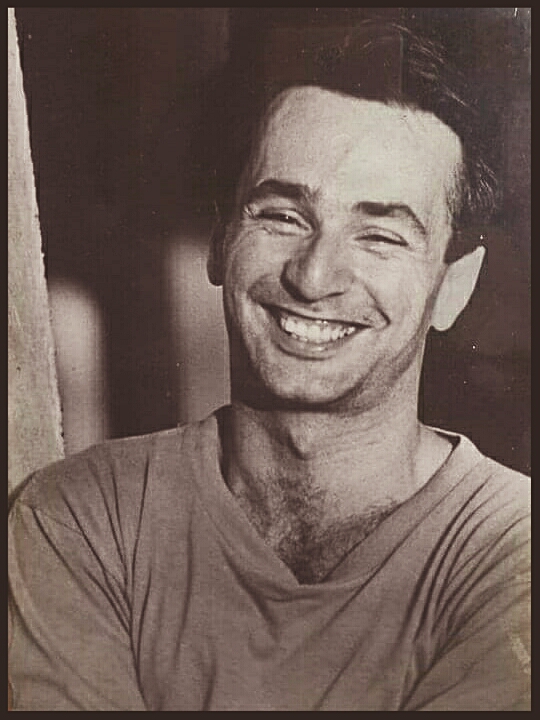
3. **Rohit Khosla: Pioneering Modern Indian Fashion**Rohit Khosla is revered as the pioneer of modern Indian fashion, having embarked on his transformative journey during the late Eighties when the Indian fashion industry was still in its nascent stages. At that time, fashion was not a widely recognized or chosen career path for many young Indians, making Khosla’s dedication and vision particularly groundbreaking. His early experiences included studying in England and working with designers in New York, which provided him with a global perspective and sophisticated techniques that he would later bring back to his homeland.
Upon his return to India, Khosla, alongside his sister Rohini Khosla, launched his own fashion label in 1987. This venture is widely considered to be India’s first haute couture label, setting an unprecedented standard for high fashion within the country. Not content with just establishing his own brand, Khosla also co-founded Ensemble, the country’s first multi-designer store, in Delhi, in the same year. This collaborative effort with designers Tarun Tahiliani and Sal Tahiliani provided a crucial platform for emerging talents and helped to shape the nascent Indian fashion landscape, fostering a community of creativity and innovation.
Tragically, Khosla’s dreams for Indian fashion were cut short when he lost his battle with cancer and died at the young age of 36, in 1994. His untimely passing represented a significant loss to the industry he had so passionately helped to build. Despite his brief career, his impact was profound; many of India’s current design stalwarts trained under his tutelage. Even three decades since his death, Rohit Khosla remains a name much revered in the Indian fashion fraternity, a testament to his enduring legacy as a true visionary who laid the groundwork for contemporary Indian design.
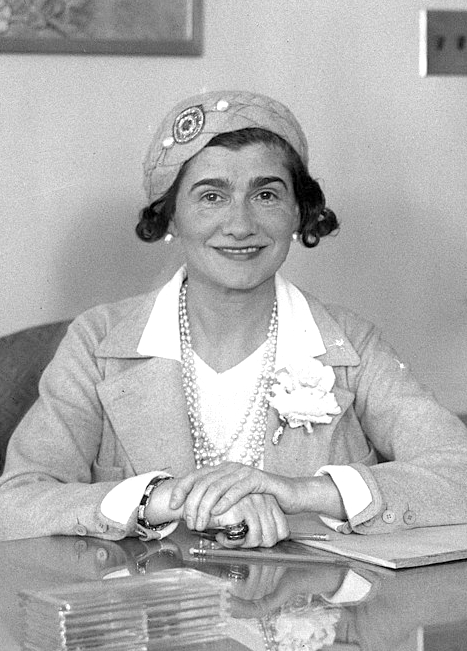
4. **Coco Chanel: Liberating Women with Timeless Elegance**Coco Chanel’s name is indelibly etched in the history of fashion, as she will forever be regarded as one of the most influential fashion designers of all time. No one matches her profound mark of sophistication and timelessness, qualities that became synonymous with her brand. She revolutionized women’s fashion in the late 20th century by introducing stylish, comfortable, and practical clothing, thereby freeing women from the restrictive corsets that had long dominated their wardrobes. Her designs were not just about aesthetics; they were about empowering women through liberation and ease of movement.
Chanel’s groundbreaking contributions include the popularization of the “little black dress,” a versatile and elegant garment that remains a quintessential wardrobe staple to this day. Alongside this, her iconic Chanel No. 5 perfume quickly became a global sensation, symbolizing luxury and refined taste. She also introduced the Chanel suit, characterized by its boxy jacket and knee-length skirt, masterfully blending comfort with an undeniable sophistication. These creations collectively forged paths for women in both fashion and business, inspiring a new era of independence and modern femininity.
Coco Chanel’s vision transformed her into a legend, and her brand continues to be a global beacon of luxury and refinement, embodying effortless elegance. The legacy she meticulously built lives on through the Chanel brand, which consistently blends tradition with modernity, appealing to new generations while honoring its foundational principles. Her revolutionary approach to style and her unwavering commitment to simplicity, comfort, and confidence ensure that Chanel’s influence on fashion is both classic and transformative, truly standing the test of time.
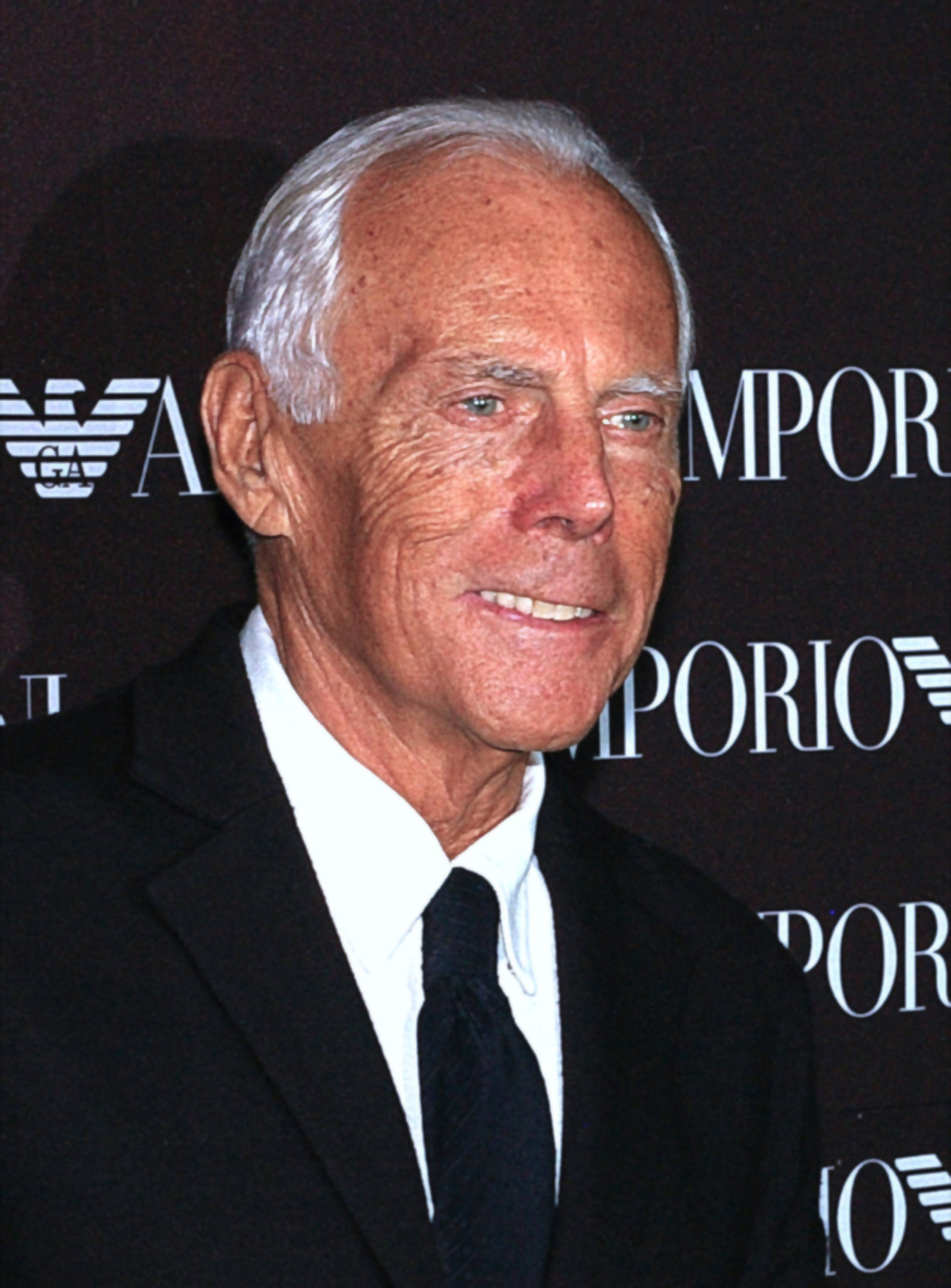
5. **Giorgio Armani: The Master of Minimalist Power Dressing**Giorgio Armani is widely credited for introducing an era of refined minimalism into both men’s and women’s fashion, a distinctive aesthetic that redefined professional and casual wear. He became renowned for his reimagined and gentle take on modern suiting, a departure from the rigid, structured garments that had previously dominated the sartorial landscape. Armani’s signature soft-shouldered suits, characterized by their relaxed tailoring and fluid silhouettes, quickly gained immense popularity, offering a sophisticated yet comfortable alternative for the modern professional.
His eponymous brand, Armani, ushered in the influential era of “power dressing” in the 1980s. This movement emphasized clothing that conveyed authority, confidence, and professionalism, and Armani’s designs perfectly captured this ethos, making them a favorite among burgeoning executives and public figures. The understated elegance and impeccable craftsmanship of his collections resonated deeply with those seeking to project strength without sacrificing style, establishing a new paradigm for sophisticated attire in both corporate and social settings.
Today, Giorgio Armani’s legacy endures, and his brand continues to be a perennial favorite among celebrities and professionals across the globe. His commitment to clear, precise lines, luxurious fabrics, and a sophisticated color palette has cemented his position as a master of timeless design. Armani’s philosophy of understated luxury and his impact on contemporary suiting remain profoundly influential, proving that true style is often found in simplicity and meticulous attention to detail.
Read more about: Remembering the Icons: Notable Celebrities and Public Figures We Lost in 2025
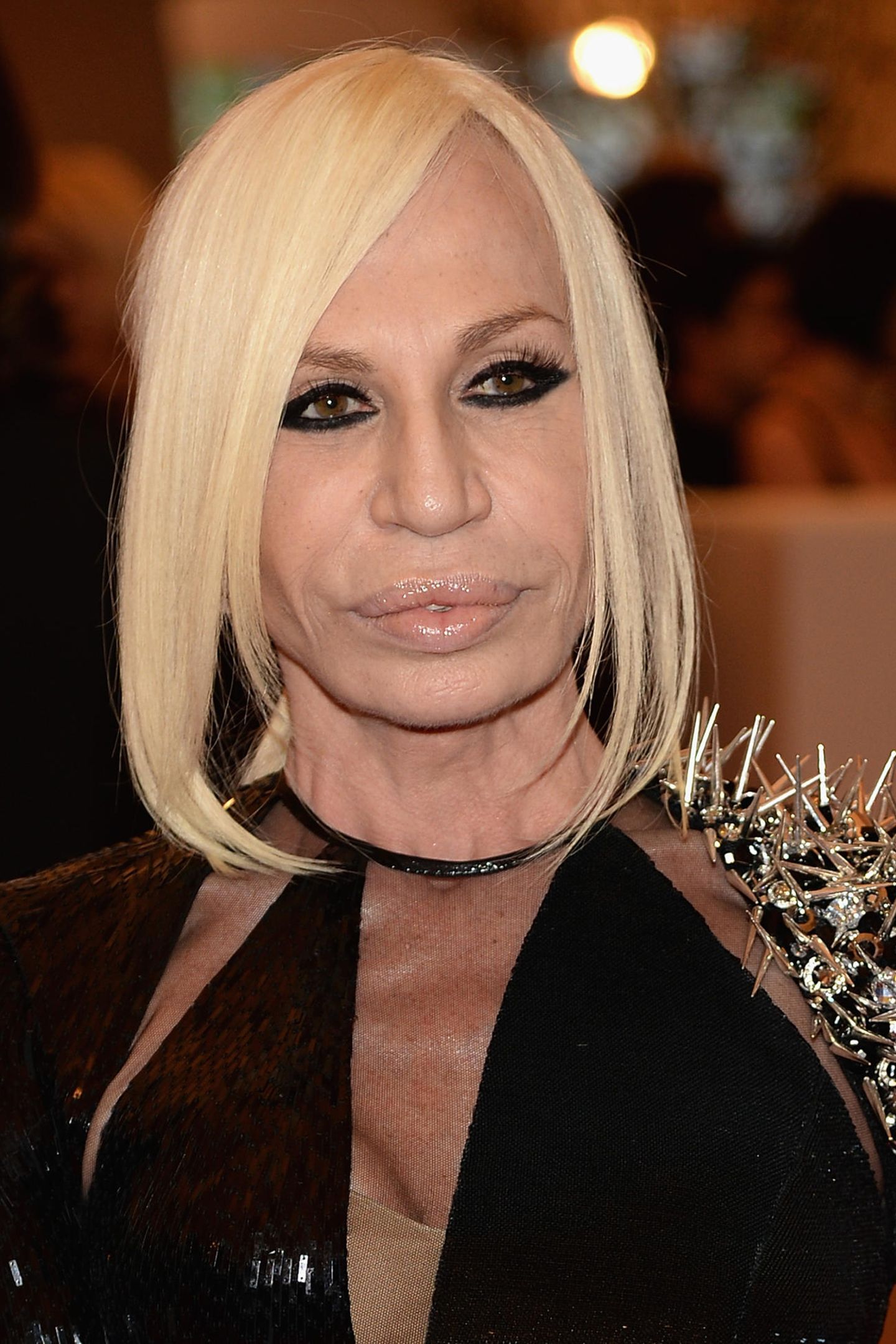
6. **Donatella Versace: Propelling a Legacy with Bold Glamour**Following the tragic assassination of her brother, Gianni Versace, Donatella Versace bravely stepped into a monumental role, becoming the head of the iconic fashion brand and taking it to unprecedented new heights. Her leadership was not merely about maintaining a legacy; it was about boldly propelling the house forward with her distinct vision. Donatella became increasingly known for her audacious use of vibrant colors, daring cuts, and supremely glamorous designs, all of which cemented Versace’s reputation as a powerhouse of opulent and edgy style.
Donatella is often credited with having “created the red carpet” as we know it, transforming celebrity appearances into global fashion moments. Her creations, famously including the legendary “Jungle Dress” worn by Jennifer Lopez, showcased a profound understanding of the power of image, red carpet spectacle, and pop culture as essential fuel for fashion. She masterfully blended modern luxury with an edgy style that was both recognizable and aspirational, making Versace one of the most widely recognized and influential brands in the world, synonymous with a fierce and unapologetic femininity.
Under Donatella’s unapologetically bold direction, Versace became a potent symbol of power and confidence. Her glittering glamour, body-hugging silhouettes, and fierce aesthetic not only honored Gianni’s flamboyant spirit but also made the house distinctly her own. She ensured that Versace celebrated identity and strength, proving that fashion could be fearless and inclusive while retaining its luxurious appeal. Her enduring tenure continues to shape global trends, proving her an iconic figure among celebrity fashion designers who understand the profound impact of image and influence.

7. **Yves Saint Laurent: Blending Femininity, Menswear, and Accessibility**Yves Saint Laurent stands as a true trailblazer in fashion, a jack of all trades who ingeniously blended femininity with elements traditionally found in menswear. His revolutionary approach empowered women by introducing staples like the iconic tuxedo jacket for women, famously known as Le Smoking. This groundbreaking design, influenced by the style of French model Danielle Luquet de Saint Germain, fundamentally changed the game regarding androgyny in fashion, allowing women to dress boldly, freely, and on their own terms, exuding femininity in completely new and assertive ways.
Saint Laurent not only fused elegance with rebellion but also democratized designer fashion through his innovative approach to accessibility. He pioneered ready-to-wear lines, notably launching his “Rive Gauche” collection in 1966. This initiative made high fashion more attainable for a broader audience, bridging the gap between exclusive haute couture and everyday style. His vision was to bring the artistry of designer fashion to the streets, allowing more women to partake in luxury and innovation.
Beyond his commercial successes, Saint Laurent deeply integrated art and fashion, creating collections inspired by culture, history, and various artistic movements. His brand, YSL, continues to be identified with unparalleled elegance and innovation in both haute couture and ready-to-wear fashion on the high street. His immense contribution to the industry was recognized in 1983 when he became the first living fashion designer to be honored by the Metropolitan Museum of Art with a solo exhibition, a testament to his profound and lasting influence. Today, his creations continue to be adored across the globe, a powerful symbol of sophisticated defiance.”
,”_words_section1″: “1965
Continuing our journey through the annals of fashion history, we now turn our attention to seven additional iconic designers whose revolutionary visions, commitment to social commentary, and often provocative impacts have irrevocably shaped global style and culture. These figures have not merely created garments; they have challenged norms, sparked conversations, and used their platforms to articulate profound statements about identity, society, and the very essence of human expression. Their legacies demonstrate how fashion transcends the superficial, becoming a potent medium for activism, intellectual inquiry, and artistic defiance.

8. **Vivienne Westwood: The Anarchic Spirit of Punk Couture**Vivienne Westwood, an indelible figure in fashion, emerged as a true provocateur, activist, and cultural icon, fundamentally altering the trajectory of modern style. Her journey began amidst the vibrant punk scene of 1970s London, where she, alongside Malcolm McLaren, co-created the infamous SEX boutique. This initial venture was a powerful statement of anarchic energy, a direct challenge to the established sartorial order.
Westwood masterfully tore up the conventional fashion rulebook, fearlessly blending disparate elements such as leather, silk, politically charged imagery of the late Queen, and traditional Harris tweed. Her designs were not just clothing; they were visual manifestos, merging historical references with a defiant spirit of rebellion. This audacious approach solidified her reputation as a designer unafraid to confront and subvert.
Beyond her groundbreaking aesthetics, Westwood’s unwavering commitment to various causes elevated her to heroic status within and beyond the fashion realm. She campaigned fiercely against rampant overconsumption, ardently urging individuals to “buy less, choose well, make it last.” Whether orchestrating runway protests with “God Save the Queen” tees or demonstrating outside Parliament in elaborate regalia, her message was consistently clear: fashion possessed an inherent capacity for political engagement and social commentary. Her legacy endures as a testament to courage, outrage, and unparalleled brilliance.

9. **Miuccia Prada: Subversive Elegance and Intellectual Rebellion**Miuccia Prada stands as an intellectual rebel within the fashion landscape, a designer who has seamlessly woven together art, politics, and an unexpected beauty with remarkable precision. Holding a PhD in political science, Prada’s academic background profoundly informs her design philosophy, transforming her family’s esteemed leather goods brand into a powerhouse of subversive elegance. Her approach consistently challenges conventional notions of luxury and aesthetics.
With deep roots in feminist activism, Prada has consistently pushed boundaries, introducing what some have termed “ugly-chic” aesthetics. She embraces bold ideas and unconventional materials, proving that fashion can be both profoundly thought-provoking and powerfully progressive. Her collections often serve as a commentary on contemporary society, prompting reflection on beauty, power, and perception.
Under her astute direction, Prada has not only maintained its status as a leading luxury brand but has also evolved into a platform for intellectual discourse. Her designs are renowned for their intricate complexity, often featuring layers of meaning and challenging the viewer to look beyond the surface. Miuccia Prada’s lasting impact lies in her ability to merge high-concept artistry with commercial success, demonstrating that fashion can be a powerful vehicle for intellectual and cultural critique.

10. **Guo Pei: The Queen of Couture Bringing Chinese Heritage to the Global Stage**Guo Pei has emerged as a formidable force in the realm of haute couture, celebrated for her exquisite craftsmanship that majestically brings Chinese heritage to the global stage. As the undisputed queen of couture, her creations are characterized by their opulent, hand-embroidered gowns, which intricately blend traditional techniques with groundbreaking innovation. Each piece is a testament to meticulous artistry and a deep reverence for cultural legacy.
Her distinctive vision gained immense international recognition when she dressed Rihanna in the unforgettable, bold yellow cape for the 2015 Met Gala. This iconic moment underscored Pei’s ability to transcend cultural boundaries and capture global attention, unequivocally proving that fashion can be a magnificent fusion of art, history, and pure spectacle. Her gowns are not merely garments; they are wearable sculptures, imbued with narrative and splendor.
Guo Pei’s work consistently showcases an unwavering dedication to preserving and elevating Chinese artisanal skills. She meticulously employs ancient embroidery techniques and luxurious fabrics, transforming them into contemporary masterpieces that resonate with a global audience. Her influence extends beyond aesthetics, fostering a deeper appreciation for the rich tapestry of Chinese design and cementing her legacy as a visionary who bridges tradition with avant-garde artistry.

11. **Ashish Gupta: Sequins as Statements for Love and Inclusivity**Ashish Gupta stands out as a designer who masterfully transforms ordinary sequins into powerful social statements, blending glitter, glamour, and activism into every meticulously crafted piece. His designs are characterized by their bold, hand-embellished aesthetic, which serves as a vibrant celebration of love, identity, and inclusivity. His runways have notably featured slogans like ‘Love Will Win’ and ‘Immigrant’ shimmering brightly, making his political stance undeniable.
Drawing deeply from both his rich Indian heritage and the dynamic street culture of London, Ashish has forged a unique design language that is both visually arresting and conceptually profound. His collections are infused with an infectious energy and a playful spirit, often utilizing kaleidoscopic colors and intricate patterns to convey messages of hope and defiance against prejudice.
Ashish Gupta unequivocally demonstrates that fashion possesses the capacity to dazzle and disrupt simultaneously. His work champions joy and resistance, showcasing how garments can be powerful tools for challenging societal norms and advocating for a more accepting world. By infusing his creations with a blend of cultural storytelling and a commitment to social justice, Ashish has cemented his reputation as a designer whose impact extends far beyond the runway, inspiring a generation to embrace fashion as a vehicle for positive change.
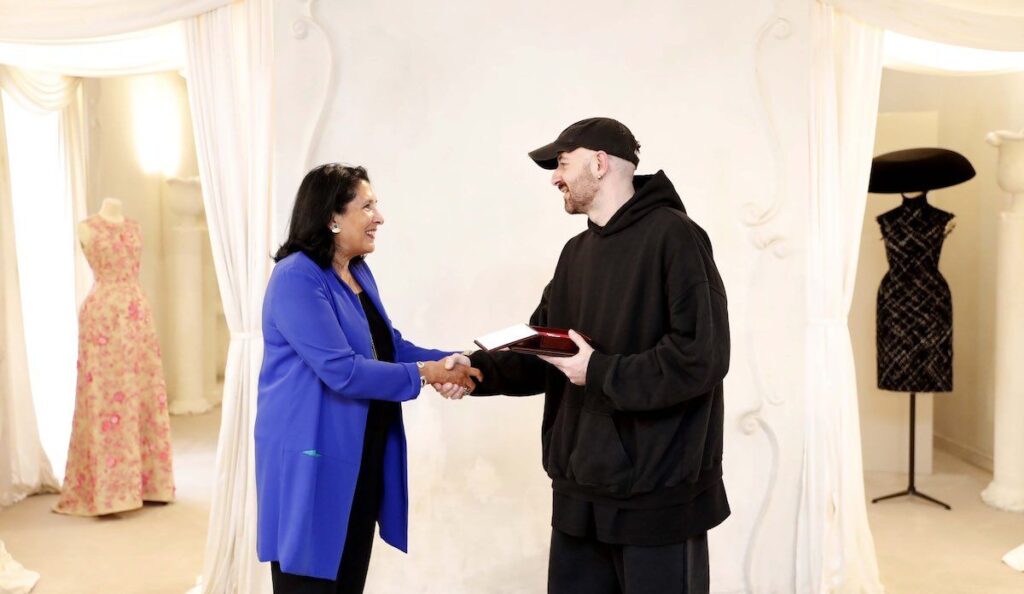
12. **Demna Gvasalia: Deconstructing Luxury with Irony and Dystopian Edge**Demna Gvasalia, a Georgian-born designer, has carved out a distinctive niche in contemporary fashion by blending irony, politics, and streetwear into luxurious garments with sharp precision. He is widely recognized for consistently tearing up the conventional fashion rulebook, challenging established norms with his audacious vision. His trajectory spans from co-founding the influential brand Vetements to his transformative leadership at Balenciaga.
As the creative director of Balenciaga, Gvasalia has instigated a radical reinvention, pushing the boundaries of what a luxury fashion house can represent. His signature aesthetic includes oversized silhouettes, overt corporate logos, and a distinctly dystopian edge, all of which serve to provoke and question the very nature of consumerism and contemporary culture. His shows are often conceptual spectacles, blurring the lines between art, fashion, and social commentary.
Behind the provocative shock factor of his designs lies a deep and incisive critique of consumerism and societal structures. Gvasalia’s work invites viewers to consider the implications of fast fashion, brand fetishism, and globalized culture. His profound impact stems from his ability to fuse high fashion with the vernacular of everyday life, challenging the industry to engage more critically with its role in the modern world while maintaining a powerful, influential voice.
The narratives of these iconic fashion designers collectively form a vibrant tapestry woven from innovation, defiance, and a relentless pursuit of artistic expression. From Vivienne Westwood’s punk-infused activism to Miuccia Prada’s intellectual critiques, Guo Pei’s breathtaking cultural spectacles, Ashish Gupta’s sequined statements of inclusivity, Demna Gvasalia’s dystopian deconstructions, Rei Kawakubo’s avant-garde explorations of form, and Jean-Paul Gaultier’s fearless celebrations of diversity, each designer has contributed uniquely to the evolving dialogue between fashion and society. Their legacies are not static; they are living testaments to the power of imagination and the courage to challenge, inspire, and profoundly reshape the world we inhabit, one meticulously crafted garment at a time. The impact of these visionaries extends far beyond mere clothing, affirming fashion’s undeniable role as a powerful mirror and catalyst for cultural change.

